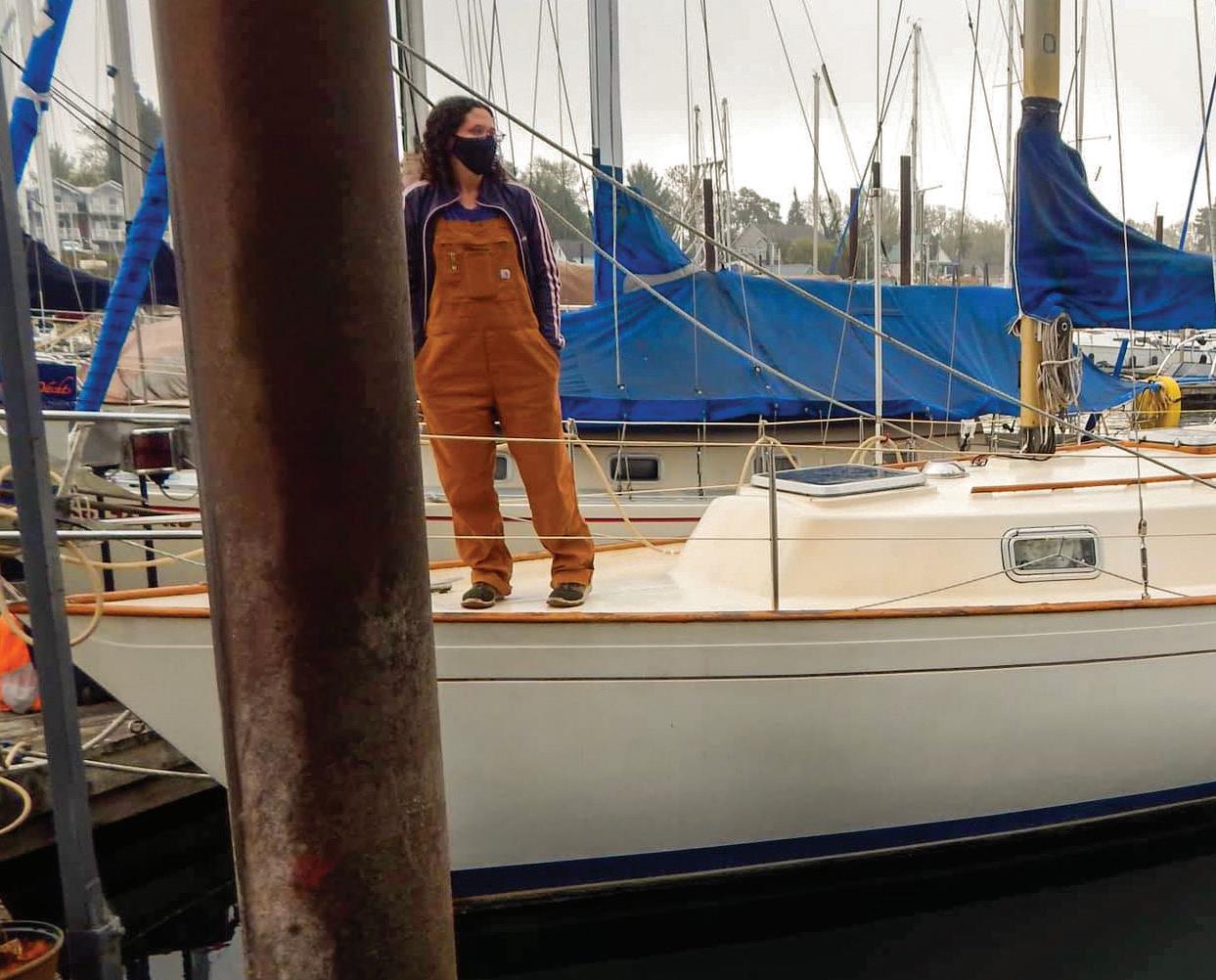22
How-to
BEWARE OF THE EXHAUST ELBOW
ADD THIS OFTEN MISSED AND NEGLECTED ENGINE PART TO YOUR MAINTENANCE CHECKLIST by Wendell Crim After starting the engine on my 1992 Beneteau First 310, Encore, in preparation for annual servicing, no raw water flowed from the exhaust. Two weeks after I began my initial search for the problem with the usual suspects of strainer and impeller, I discovered the exhaust elbow was plugged with salts and corrosion, which stopped raw water from being able to flow freely through the system. Here’s what I learned about this critical engine part and why it’s important to put it on your long-term maintenance list. Over 20 years of maintaining three different marine engines, I’ve read plenty and heard lots of advice for avoiding overheating: checking and cleaning the sea strainer, and regularly replacing the impeller are keys to keeping the engine cool. Exhaust elbows, on the other hand, also need to be inspected and maintained properly, but that generally occurs once failure has happened. Until then, the elbow is hidden on the back of the engine — out of sight, out of mind. Encore’s engine is a 28-year-old two cylinder diesel Volvo Penta 2000 series. The engine and its compartment are very clean, it has operated flawlessly and there were no visual or operational hints of a developing problem. As it is often the culprit, I began my diagnosis at the raw water impeller. It was in good shape, so I started a methodical investigation at the seacock inlet, to the strainer, past the impeller to the anti-siphon valve. Water flow was good at each point and there were no breaches in the hoses along the way. Next in line was the heat exchanger. I have read horror stories about removing it and the associated plumbing headaches on this particular design. The heat exchanger is tucked into the engine’s starboard side hard against the engine room wall. There is little space for hands to work, let alone turn wrenches. To test water flow through the heat exchanger, I poured water down the hose leading to it from an anti-syphon valve. Removing the cap from the rear of the heat exchanger demonstrated water flow. Then, during a passing conversation with a marina neighbor, he suggested the exhaust elbow could be plugged. Based on the exterior condition — no evidence of rust, corrosion, leaks, or overheating — it didn’t seem likely. Since I was out of ideas and the elbow was the last component of the raw water system, I decided to remove it from the engine block before calling in a mobile marine mechanic. To my surprise, the elbow was fully plugged at the raw water inlet and at the mixing point of raw water and exhaust. After an overnight soak in descaler, I also found evidence of metal
48º NORTH
fatigue. There was no longer a complete surface for the rubber seal at the raw water inlet. A couple of marina neighbors mentioned having good results installing stainless steel elbows in place of the original cast iron part. With that in mind, I contacted HDI Marine in Vancouver, Washington, and they sent a reasonably priced stainless steel elbow for my Volvo in less than a week. The tube from the heat exchanger to the elbow was also plugged. So while waiting for the new elbow delivery, I clamped in place a clear hose to hold descaler overnight to dissolve the material plugging the tube. This eliminated having to disassemble the heat exchanger. In preparation for installing the new elbow, I scraped the old gasket off the engine block. On three sides of the exhaust port, there are rectangular slots filled with material that appeared too solid to be salts and corrosion. With help from the service team at Pacific Power Group in Kent, I learned the three slots are welded shut because the engine is freshwater cooled. When the engine block is raw water cooled, these slots are open for cooling water to exit into the elbow. To help with gasket placement while installing the new elbow, I cut the heads off two old bolts. After screwing them into the engine block a few turns with the gasket in place, I slipped the new elbow over the cut bolts. New bolts were installed in the remaining openings, then in place of the cut bolts. Lastly, I used a torque wrench to complete the installation. Most often, an overheating engine is the first way we sailors experience water flow being restricted in the exhaust elbow. Over time, the overheating occurs after ever-shorter run times. In this case, my engine had given no apparent signs of reduced water flow or overheating. When I discovered the lack of exhaust water, the engine had not been run for two months; and over that period of time a complete blockage developed. Based on this experience, my maintenance plan has been updated to include removal and inspection of the exhaust elbow every five years. I suggest all boat owners put this item on their maintenance list as well.
After flying airplanes for 15 years, Wendell Crim switched to the vertical wings of sailing. Twenty some years and four vessels later, the learning continues on races and cruises, and retirement now provides more time to take in the wonders of sailing.
22
FEBRUARY 2021





